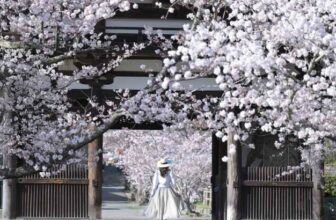Train Etiquette in Japan – What You Need To Know Before You Go
Travelling by train in Japan is by the far the easiest and most convenient way of getting around, and the perfect way to visit all the top attractions the country has to offer. The whole experience is usually very orderly, clean, precise (trains almost always arrive on time) and quick.
As with any culture though, there are a few social norms to keep in mind, especially on Japanese trains. There are general train rules and things you should avoid doing out of common courtesy. Millions of Japanese people commute via train everyday and as foreigners, understanding what’s socially acceptable and what isn’t will make your journey more comfortable for everyone. For more tips on travel in this fascinating country, check out this Japan travel blog guide.
Here are 10 of the most important tips for train etiquette in Japan that you need to keep in mind whether or not you’re travelling solo, as a couple, family, or group:
1. Don’t smoke
With the exception of designated smoking cars on the Shinkansen, smoking is a big no-no when riding the trains. You’ll notice people don’t even smoke in public unless it’s in a designated smoking area on the street, or in a restaurant or bar where smoking is allowed. But on a train, no smoking allowed!
2. Remain quiet or even better, silent
People generally sit or stand in silence while on the trains as being too loud and disturbing other passengers is considered rude. This includes talking on your phone or having loud conversations. If you need to chat to your travel companion, do so in low voices. Also make sure your phone is on silent and that other people can’t hear the music you’re listening to or the game you’re playing.
3. Don’t eat or drink
Japanese people don’t usually eat in public let alone walk and eat. On local trains, eating and drinking anything other than water should be avoided. The only time where eating and drinking on trains is acceptable is on regional long-distance trains, like the Shinkansen, where every seat has a tray and cup holder. You can buy snacks on these types of trains off a trolley, or bring your own food.
4. Priority seating
This is pretty common for any type of public transportation in most cities around the world, but seats should be given up to elders, young children, pregnant women, and those with disabilities. On Japanese trains, there are seats usually near the door specifically marked as “priority seating” and sometimes in a different colour. You may sit there if you like if it’s not too busy, but remember to give up your seat to those more in need of one.
5. Yellow lines and numbers on station platforms
There’s a special way of queuing in line before getting on the trains. Always stay behind the thick textured line before the edge of the platform, and line up either two by two or single file, depending on the station, at one of the numbered spots on the platform. Some of the larger stations will have “platform conductors” as I like to call them, making sure people are far enough away from the edge when the train arrives. Other stations have a physical barrier and sliding automatic doors. Before getting on the train, make sure to stand to the side and let people off first.

6. When leaving the train…
It’s best to start moving towards the train doors if you know your stop is coming up, especially if the train is packed since people are quick to get on and off. Generally people will move aside for you anyways if they know you’re inching towards the door (make sure to do the same for others) but if people aren’t moving out of the way, a slight nudge and saying sumimasen (sue-mee-mah-
7. Don’t take up seat space
Japanese people often work ridiculously long hours and taking the train is often a time to rest before they begin their day, or when their day is over. Make sure you aren’t taking up an extra seat and put your backpack on your lap, between your legs on the floor, or above you on the racks if there are any.

8. For women only
I was a bit surprised to see this, but in the mornings, some train cars are designated for women only. Apparently this is so women will feel safer taking the train as there have been groping incidents on male-dominated trains when people are in close quarters. The platform is usually marked with a pink sign if a train car is going to be for women only, or you can tell by the signs and seat colours in the train. If by accident you happen to get on the wrong car at the wrong time, you can always move to the next one by exiting through the sliding doors.
9. Don’t leave anything behind
It’ll become normal to start carrying around all your trash as the Japanese are very conscious about cleaning up after themselves and not littering. The same goes on the train–take everything with you that you bring on, even a newspaper. There’s often a trash bin on the train platform or within stations to throw away your garbage.
10. Keep moving
To make sure everyone can get on the train, keep moving into the middle so you aren’t blocking others from entering behind you. It sounds simple but when it’s busy, it’s not the greatest feeling when people are pushing past you, so it’s best to move as far into the train as you can.
Following these simple train etiquette rules will get you hopping from train to train just like a local in no time. Japan’s train system is quite vast and complex and I admit it can be overwhelming at first for first-time visitors, but when all else fails and you simply don’t know what to do, I found that observing others, asking for help, or exercising common sense and courtesy will get you on your way again.
Looking for Japan travel inspiration? Be sure to read my Japan travel series on Hokkaido!
This was a guest post written by the lovely Portia Yip, of the brilliant ‘Migrant Muse‘ travel blog. Portia is passionate about writing, film, photography, art, culture and travelling and and hope to hit the road full time someday as a freelancer. If you are planning a trip to Japan, I recommend you read her post on Top 12 Films To Watch Before Going To Japan.
Further Japan Reading:
Sado Island Japan Travel Guide – Real lIfe “Spirited Away”
Visiting Higashikawa – Japan’s Town of Photography





